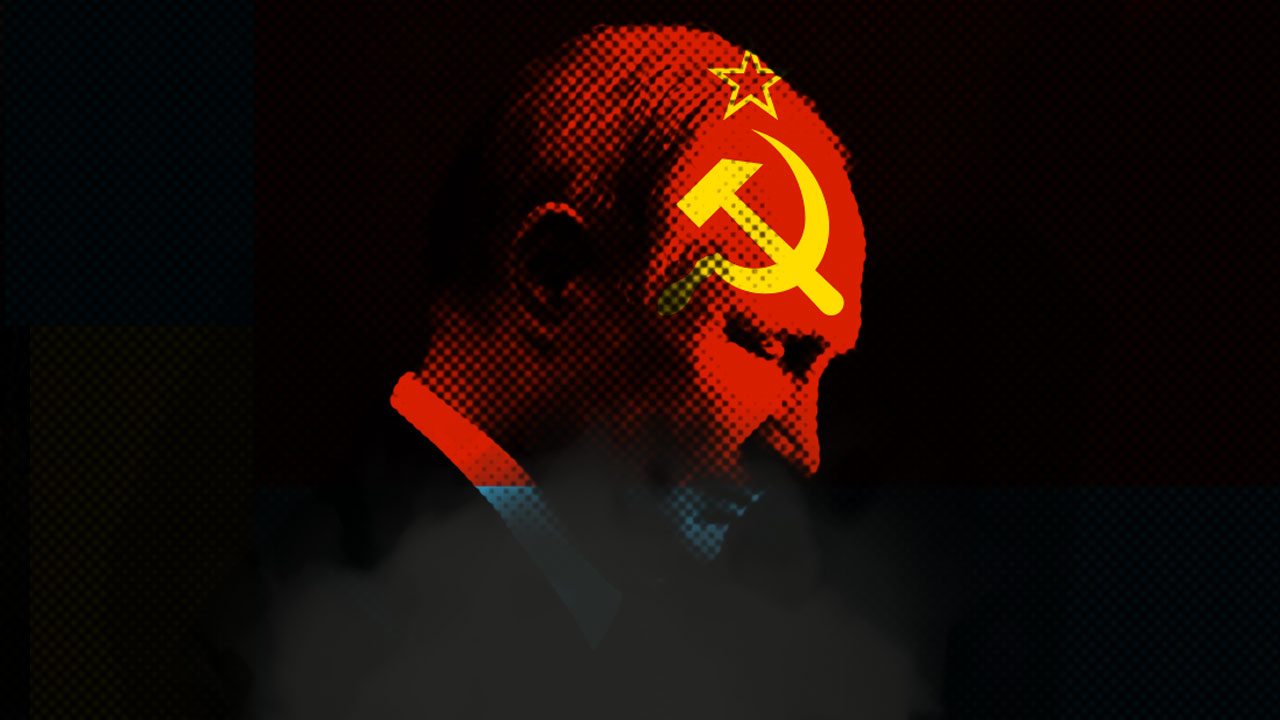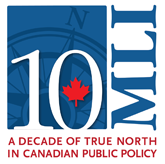We have all heard Russian President Vladimir Putin’s repeated claims about Ukraine. In his now-infamous essay, “On the historical unity of Russians and Ukrainians,” published in July 2021, Putin goes so far as to deny Ukraine any claim to nationhood and openly makes his intentions to integrate Ukraine into Russia. It is now even more relevant to make the case for Ukrainian sovereignty.
To be fair, some may wonder whether Putin’s claims are at least partially correct. We remember stories of the Kievan Rus and how empires collided on Ukrainian territory. When we hear the Ukrainian language in the news, we hear its phonetic similarity to Russian. They share the Cyrillic alphabet, Azbuka. Their economies are integrated. Many Russians have families in Ukraine and many Ukrainians speak Russian. So, to what extent are Ukraine and Russia historically linked?
Putting aside questions of language, I would like to focus on a brief historical retelling of Ukrainian’s recent history and why Putin is horribly wrong in his historical revisionism. Ukraine and Russia indeed share a history. But Ukraine also shares an extensive history with Poland. And few are suggesting that Poland has a right to take back Lviv, for example, a city that was once a part of its empire.
Historical revisionism
Putin starts his historical revisionism with the Kievan Rus (862-1242), a loose political federation consisting of what is now modern-day Ukraine, Belarus, and parts of Russia. Its capital, Kyiv, finally fell to the Mongol invasion that crippled much of Eastern Europe in the 13th century. Putin claims that this heritage is shared and binds both nations together. This may be somewhat true, but it oversimplifies a complex past. Indeed, in the words of the historian Matthew E. Lenoe, “there’s no continuous line to be traced from this loose river confederation to the Russian state.” The many empires that collided over the centuries since then have made that historical lineage nearly impossible to delineate.
“Kyiv has a much longer history than Moscow and had a thousand years of history before developing any intimate bonds with the Russian capital.”
Both Russia and Ukraine are predominantly Slavic nations located east of the Carpathian Mountains. And during their recent history, from the 17th century onwards, many people travelled from Moscow to Kyiv (or vice versa), to emigrate, study at universities, and engage in political disputes. Crimea and Odesa were common vacation spots for Russians in the summer, luring in many Russian tsars with the warmth of the Black Sea. And Russian cities as far east as Vladivostok and Khabarovsk saw significant Ukrainian migration in the 20th century.

The Invitation of the Varangians by Viktor Vasnetsov: Rurik and his brothers Sineus and Truvor arrive at the lands of the Ilmen Slavs. Photo: WikiMedia
So, from the 17th century, Ukraine and Russia’s pasts were connected by geographic and political necessity. However, their language, culture, literature, and politics significantly diverged before then. Indeed, Kyiv has a much longer history than Moscow and had a thousand years of history before developing any intimate bonds with the Russian capital. As others have noted, Kyiv was a booming city at a time when Moscow only resembled a humble village. And, more alarmingly, Ukraine and its people were the recipients of Russian wrath throughout much of the 20th century. If we look at history, we see that the only time Russia had any grasp over Ukraine was when it used force.
Historical Ukrainian resistance
Like many other European states, Ukraine first saw political autonomy after the First World War with the founding of the Ukraine People’s Republic in 1917. After establishing its autonomy, the Bolsheviks, which were quickly becoming the ruling political party in Russia, entered a war with Ukraine over its borders and territory. In 1921, the Bolsheviks finally consolidated their control over Ukrainian resistance and integrated Ukraine into its newly-formed Soviet Union. Putin and others, who view this period of Ukrainian resistance as irrelevant, ignore how the Kremlin had treated Ukrainians in the years that followed.
After Ukraine was integrated into the Soviet Union, Joseph Stalin sought to destabilize any hope of Ukraine becoming a sovereign state again – by enforcing agricultural policies that would help Russia feed its people in light of growing demand, and prevent Ukrainization and political upheaval in Ukrainian territory. The Great Ukrainian Famine (1932-1933), also known as the Holodomor, was one of the most palpable and extreme forms of immediate aggression, following the Bolshevik’s destruction of the Ukraine People’s Republic (1917-1919). The Ukrainian parliament only managed to recognize the Holodomor as an act of genocide against the Ukrainian people in 2006.
Most historians agree with depicting the Holodomor as a genocide because of strong evidence that Stalin’s policies had an “ethnonational coloration,” in the words of the historian Serhii Plokhy. In his book, The Gates of Europe, Plokhy explains that “[the Holodomor] left Ukrainian society severely traumatized, crushing its capacity for open resistance to the regime for generations to come.” Therefore, Ukraine’s early stages of integration did not come without great cost to the Ukrainian people. Ukraine’s political autonomy in 1917 was met with slaughter and a subsequent famine that killed an estimated 7-10 million people, according to a joint statement by the United Nations.
During the Second World War, Ukraine became a battlefield for Axis and Soviet Allied forces. Many Ukrainians fought alongside Russians in some of the deadliest battles of the war, including Stalingrad, Moscow, Kharkiv, and Kursk. Four Ukrainian cities were known as “hero cities” in the Soviet Union due to the great casualties the German forces caused there (Odesa, Sevastopol, Kyiv, and Kerch). More than 7 million Ukrainians lost their lives throughout the war, including citizens, which added up to 15 percent of Ukraine’s population at the time.
After the war, Ukraine’s territory may have increased by 15 percent. However, ten million Ukrainians were left without roofs over their heads, and more than 40 percent of Ukraine’s wealth and 80 percent of its industrial and agricultural equipment were lost.
Leading up to the dissolution of the Soviet Union, Ukraine also experienced the single biggest nuclear plant disaster in the world at Chernobyl in 1986. It was largely due to poor Kremlin issued policies that the powerplant malfunctioned. Some Ukrainian officials were indeed invited to Moscow to consult policy-makers, but their input fell on deaf ears. Chernobyl exposed at least 3 million people to radiation, amassing radiation comparable to the explosion of five hundred Hiroshima bombs. A territory as large as Belgium was contaminated and many had to flee their homes never to return. Here, once again, we see the Kremlin’s self-interest and brutal ambivalence over Ukraine and its people.
Despite these events, Putin has repeatedly claimed that Ukraine was the main benefactor from its time in the Soviet Union. But this is far from the case. Ukraine paid dearly for the Soviet’s forceful integration of the Ukraine People’s Republic. If anything, it could be argued that Russia was the main benefactor. In the words of the historian Dominic Lieven, “Without Ukraine’s population, industry and agriculture, early-20th-century Russia would have ceased to be a great power.”
Resistance today
Fast forward a few decades and Ukraine still faces challenges with corruption and political unrest. Upon Viktor Yanukovych’s removal as President of Ukraine in 2014, after the Maidan Revolution which claimed the lives of 121 citizens, Putin’s influence over Ukraine waned. Yanukovych was susceptible to manipulation due to his public proclivity for corruption. Putin took advantage of this and supported Yanukovych in 2004 and 2010 and ultimately granted him asylum in 2014.
Exploiting the situation in Ukraine, Russia invaded and annexed Crimea in 2014. The annexation of Crimea had unexpected results, however. It drew much of Ukraine closer to the West. Russian soldiers and separatists destabilized Donetsk and Luhansk, turning the Donbas into a warzone. The UK, US, and other countries began investing large amounts into Ukraine’s military, which became much stronger and better equipped than the Ukrainian army that Russia faced in 2014.
Putin ordered a full-scale invasion of Ukraine on February 24, 2022. Since the invasion, any semblance of Russian control has been difficult to establish. The Ukrainian army has exceeded most of the world’s expectations – especially Putin’s. It is now increasingly apparent that Putin must come to terms with the fact that Ukraine will never belong to Russia.
Summary
From the time of the Kyivan Rus until now, Ukraine’s history has been spotted with turbulence. The country’s recent history is riddled with injustices inflicted on it by Russia. Putin’s claims to Ukrainian lands are not only unfounded but raise issues around Russia’s moral accountability to Ukraine and the need to pay significant reparations for its long history of aggression. Both Stalin and Hitler had sought to claim the breadbasket of Europe for themselves. Today, Putin is aiming to do the same. And it is now clear that Putin, too, must learn the hard way that Ukrainians value their sovereignty more than life itself.
—————————–
Jakub Ferencik is an international affairs writer and the author of “Up in the Air” and “Beyond Reason.”


